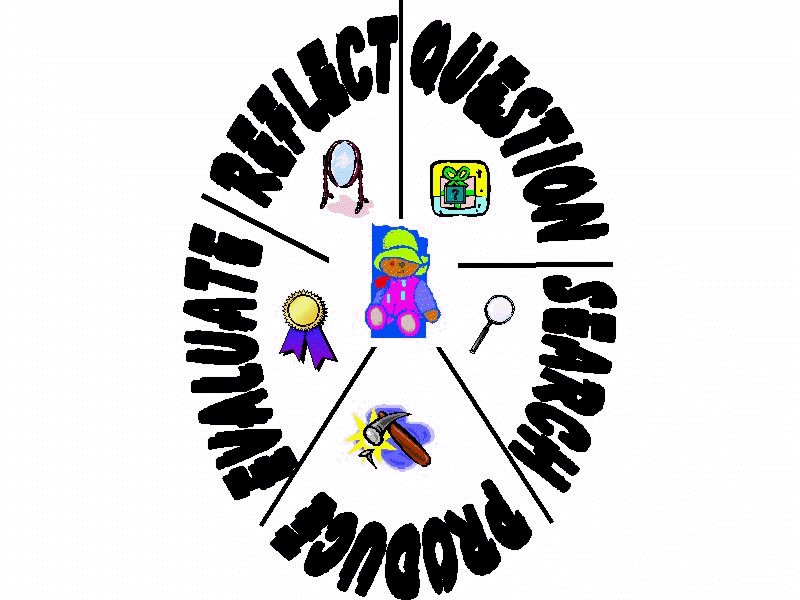How to Do a Research Project
Make a Research Plan
Step by Step
QueSPER
Quesper's planning model has five steps: Question, Search, Produce, Evaluate, and Reflect. It is circular because you may need to go through the process several times. The steps do not always follow in order. Evaluation and reflection are the keys to decisions about what you are learning.
![]() QUESTION:
Get a topic focus and questions
QUESTION:
Get a topic focus and questions
-
What is your topic?
-
What do you already know about your topic?
-
What do you want to know about your topic?
-
What does your teacher want you to know about your topic?
Advanced topic selection
-
What are the subtopics in your topic?
-
What are the subtopics that will be your focus?
-
How do the subtopics you chose relate to each other?
![]() SEARCH
SEARCH
Use the materials you know will help you
-
Dictionaries
-
Encyclopedias
-
Atlases and Almanacs
Reference books and trade books
Magazines and periodicals
Online websites
-
-
Add other resources.
-
Interviews
-
Videos
-
Audio tapes
-
CDs and other computer sources
-
Use access strategies and skills. Use keywords, authors, titles, and subjects to find materials using online resources.
Use alphabetical and numerical order, Dewey categories, section headings and shelf labels to locate your physical resources.
![]() PRODUCE
PRODUCE
-
Use the indexes, tables of contents, bold captions, highlighted words, illustrations, graphics, and other text-using strategies to find information in your resources.
Take notes on your topics and subtopics using your favorite method.
Keep a reference list of the books and materials you use.
-
Keep everything together in a folder, notebook, box, etc.
-
On Notetaking
-
Use keywords.
-
Paraphrase whenever possible.
If you need quotations, use quotation marks and write down the page number from the reference source.
Use a method that will link your note to its source in your references.
-
-
Decide when and how you will create your product.
-
On Creating Your Product
Create an outline, rough draft, story board, topic web or other organizer to get you started on your product (analyze, sort, reorganize, select, and synthesize from your notes and references).
-
Follow your teacher's directions EXACTLY when preparing your product.
-
Analyze, Organize and Synthesize
-
Sort and Select
-
Create your product
![]() EVALUATE:
Ask yourself three questions: Is my
project complete? Is my project correct? Is my project comprehensive?
EVALUATE:
Ask yourself three questions: Is my
project complete? Is my project correct? Is my project comprehensive?
1. Check your instructions to be sure that you have included everything your teacher wanted you to include (Is it complete?)
2. Check more than one resource for facts and dates. Constantly check new information against old information and watch for discrepancies. When two sources say two different things about the same, action, person, event, place, or time, etc. try to find the most authoritative source. (Whom should you believe?) Try to find the most accurate information (Is it correct?).
3. Check to be sure you have included as much information on your topic as you can so that others understand why the topic is important, what the topic has to do with other topics being studied, how to information you found is related to the whole topic. (Is it comprehensive?)
![]() REFLECT
REFLECT
1. Think about what you learned about your topic.
2. Decide how well the research process worked. Think about ways you will revise.
|
BEGIN YOUR PROJECT AND ADJUST YOUR PLAN AS YOU LEARN MORE |
Forward to: Research Plan Template
© Carol J. Fox 2002


 /
/